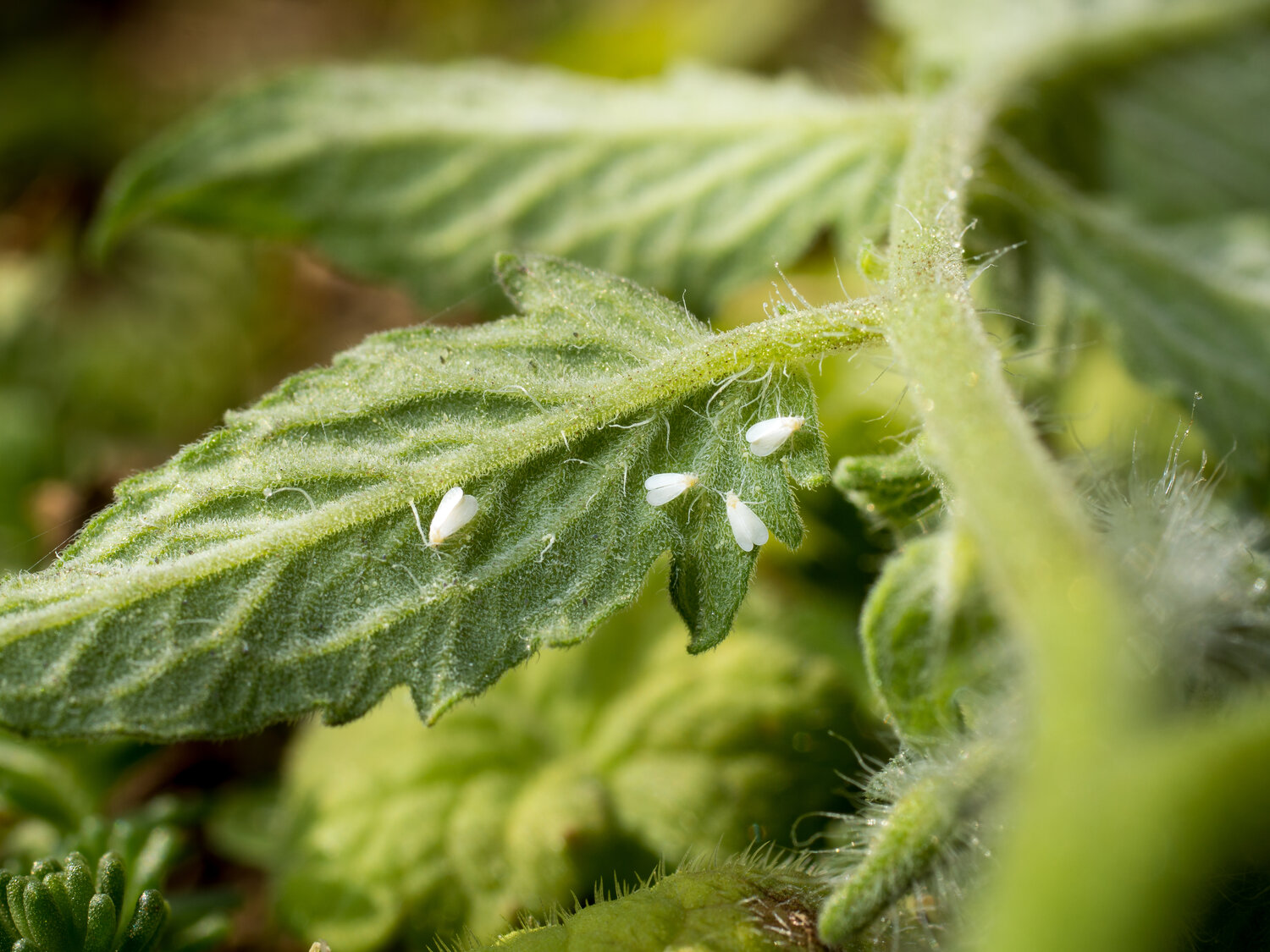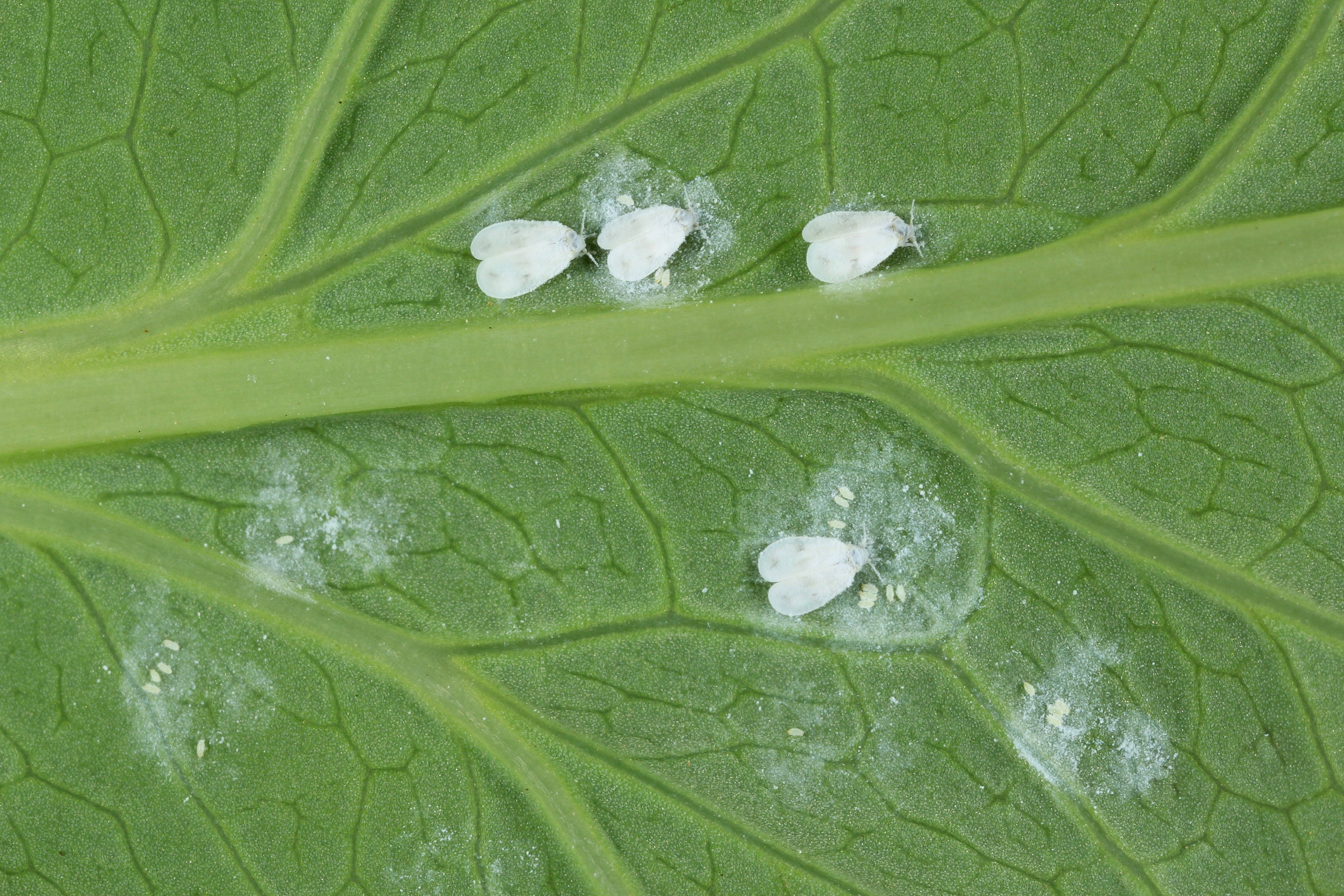What are whiteflies?
Whiteflies are related to aphids, and can be just as pesky! They can also be responsible for spreading a number of different plant viruses.
Symptoms
Adult flying individuals are often easily startled, and fly away when they are disturbed
Leaves turn yellow and fall off prematurely
Sticky sap, called honeydew, can be found on the leaves and on surfaces around your plant

What to do now
Isolate the infected plant. If you have a severely infested plant, consider throwing it away.
Spray the leaves with short bursts of water from a hose.
Treat your plant with soapy water, neem oil, a store bought pesticide or insecticidal soap.
Catch them with sticky glue traps. This is a good way to monitor how severe the infestation is, as you will see how many Whiteflies gather and how quickly
Consider using biological control for Whiteflies
Keep treating your plants. Continue repeatedly treating your plant about once a week for the next 4-6 weeks. Then repeat it about once a month for a couple of months. After that you can repeat the treatment if necessary.

Common questions
What do they look like?
Adult Whiteflies are moth-like in appearance, with white wings that vary in shape depending on the species of Whitefly, but are often triangular. They are small, (usually around 1/16 inch or 1.5 mm long), with short antennae.
Whiteflies are often found in clusters on the undersides of leaves, so make sure to check your plant thoroughly. They are active during daytime, and are mostly seen during mid- to late summer, when the weather is warmer. They often lay their eggs in concentric (circular) patterns, which is another sign to look out for if you’re unsure if your plant has whiteflies.
Do whiteflies bite humans?
Whiteflies are harmless to humans, and are only drawn to plants, so shouldn’t be a problem for people or pets.
Where did they come from?
These pests typically come from outdoors, and can also be introduced by new plants brought into your home, so always make sure to check newly acquired plants for pests and quarantine them if possible before adding them to your collection.
How do they spread?
Because adult whiteflies can fly, it is possible that they will fly to new plants to lay eggs. However, they mostly choose to stay near their host plant. Nymphs can’t fly, they attach to the plant to feed and do not move from plant to plant.
How long do they live?
A whitefly’s whole life cycle takes around 3 weeks in total. Adults can then live for up to 2 months. Around 200-400 eggs are laid which then hatch within 5-10 days. They're easiest to identify during their pupal stage. Nymphs can often be mistaken for scale insects.
What do they eat?
Both adults and nymphs feed on plant sap, which can quickly leave the plant weakened and unable to photosynthesize effectively. The honeydew that they produce and deposit on leaves can also lead to the development of black mold.
Where do they usually live?
Whiteflies are found worldwide, but prefer warmer climates and cannot survive freezing conditions (although nymphs can overwinter as long as it doesn’t get too cold). This means that in southern regions, they are found all year round outdoors, but in colder northern regions, there is only a risk of indoor infestations, during the winter. As such, they are also a common greenhouse pest.
How can I prevent this in the future?
It’s always a good idea to do regular check ups of your plants for pests, as early detection is a great way to prevent a full infestation from taking hold. Give your plants a quick once-over every now and then to check for any signs of pests.
Can you tell me more about pest control?
Certainly! Note that some plants can react badly to pesticides or soaps so test it on a smaller area of the plant first. Always avoid direct sunlight after application as it can otherwise burn the plant. Biological pest control are predators that include lacewings and ladybugs.